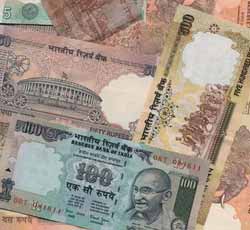Fiscal deficit tops 45% of full-year target in April-May
01 Jul 2014
A slow pace of economic growth combined with fall in the growth of revenue collection and bigger-than-projected fiscal challenges left behind by the UPA government have pushed the country's fiscal deficit in the first two months of the current fiscal (2014-15) to 45.6 per cent of the Budget Estimate for the whole year.
 Fiscal deficit, which is the difference between earnings and expenditure, stood at 33.3 per cent of the annual projections in the same period last year.
Fiscal deficit, which is the difference between earnings and expenditure, stood at 33.3 per cent of the annual projections in the same period last year.
Former finance minister P Chidambaram, while presenting the interim budget, had projected a fiscal deficit of 4.1 per cent of gross domestic product, assuming a 19 per cent rise in tax revenue. However, tax revenues rose only 3.1 per cent from a year ago as economic growth remained sluggish.
According to data released by the Controller General of Accounts (CGA), government expenditure outpaced revenues. Non-Plan spending (interest, subsidy and defence) touched 18.3 per cent of the budget estimate against 13.4 per cent during the same period last year. However, Plan expenditure declined to 10.7 per cent against 12.3 per cent last year.
The government's oil subsidy bill amounted to Rs24,774.76 crore in the first two months of the current fiscal against nil in the previous year.
The interim budget had provided Rs63,500 crore for fuel subsidy, including a rollover of Rs35,000 crore.
It may be noted that normally the subsidy bill of the fourth quarter (January-March) is provided in the Budget of the next fiscal year and paid by June 30.
Meanwhile, tax collections during the first two months witnessed low growth. While income tax, service tax and other levies (mainly securities transaction tax) were higher than last year, corporate tax, Customs duty and excise duty were lower.
Finance minister Arun Jaitley is widely expected to revise the fiscal deficit estimates for the current fiscal when he presents the annual budget on 10 July.
Revenue authorities, however, are optimistic on buoyancy in tax collections with an expected pick-up in growth in the second half of the fiscal.
However, with interest outgo accounting for 30 per cent of the increase in the government's total expenditure in April-May 2014 and substantially higher subsidy payments during the period, the government's fiscal deficit is expected to rise further.
Global rating agency Moody's had last month pointed to the likely ''shocks'' the Indian economy is exposed to on account of high fiscal deficit and said the country's credit outlook will depend on government's initiatives in the next month's budget to contain expenditure and reduce exposure to global commodity prices.
''More relevant to the sovereign credit outlook will be whether the budget includes measures that address the government's low revenue base, high current expenditures and exposure to commodity prices,'' Moody's said in a report.
India's budget deficit is high and this increases macro-economic imbalances and thus ''expose the economy to shocks'', Moody's Investors Service said in the report titled, ''Frequently asked questions on India's fiscal position and the forthcoming budget''.
''In absence of measures to reduce the fiscal deficit, the future high growth rates many forecast for India may not be realised. The July Budget could indicate whether fiscal constraints on India's sovereign credit profile will ease over the coming years,'' Moody's said.













.jpg)






.jpg)









